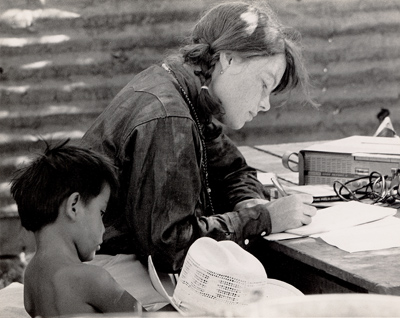For Navajo children, a rigorous program draws on tradition to spur achievement.
Put the same question to Maggie Benally, the school’s principal, and she’ll credit instruction driven by analysis of students’ test scores. The Navajo Language Immersion School—Tséhootsooí Diné Bi’ólta’, to use its Navajo name—made adequate yearly progress in all subgroups under the federal law last school year, Ms. Benally said, because “the teachers know exactly where their students are in terms of data.”









